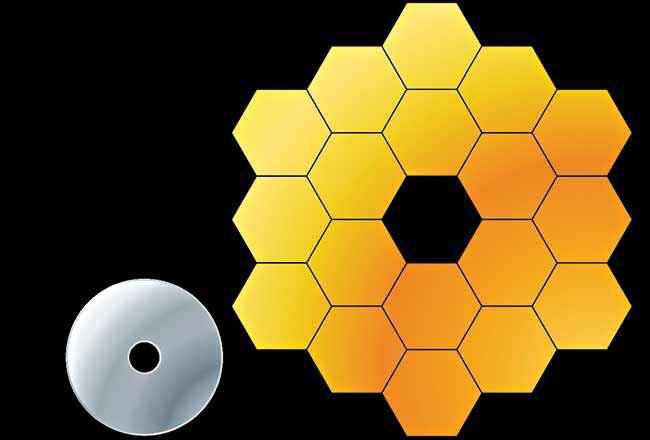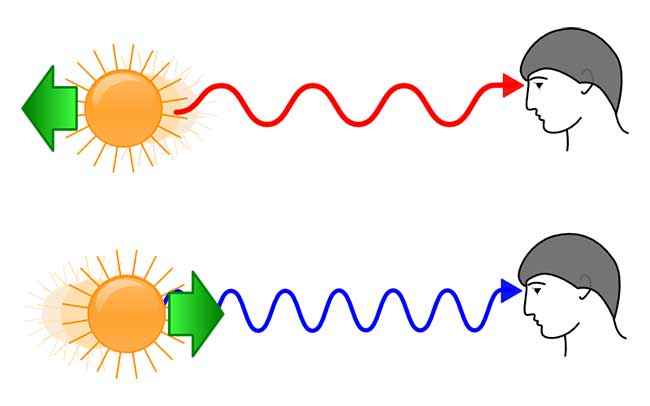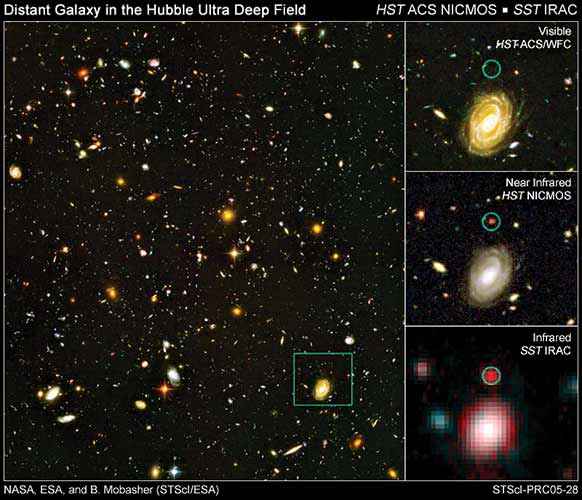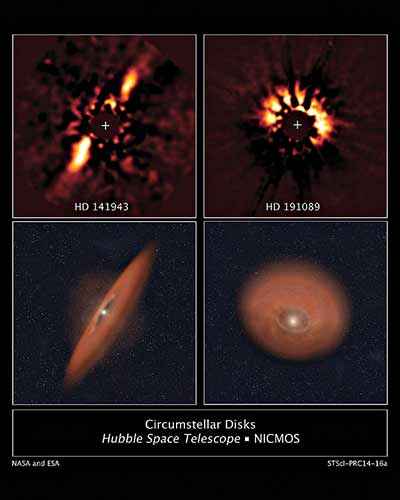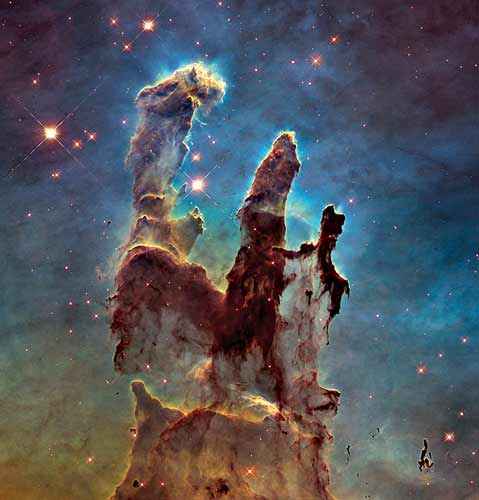In Depth: James Webb Space Telescope can help us peer better into the darkness of space
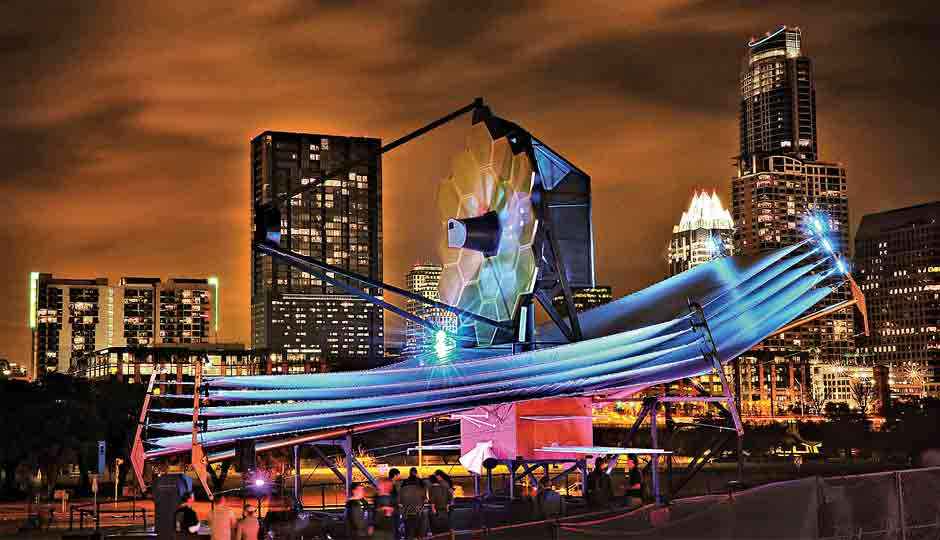
The Hubble’s successor sure is worth looking at.
Even if you don’t work in astronomy, cosmology or any other allied branch of physics or engineering, odds are that you might have heard of the Hubble Space Telescope (HST), such has been the magnitude of its success. HST has been NASA’s flagship mission for a very long time now, gathering critical data from regions in the cosmos light years away from the earth and helping scientists unravel the many mysteries of our universe. But, believe it or not, even though the Hubble is a landmark feat of advanced engineering, it too can become obsolete. HST has been on mission for more than two decades now, and while it still has functioning capability many scientists believe that the HST is now incapable of pushing the limit of astronomical observations. Astronomers love data. Colorful images are great for public relations but scientists need hard data to study the workings of the Universe. They want to capture light from the early universe, study structure formations that currently can’t be studied and in general push the envelope for what we can see and what is in the dark, as of now. Enter, the James Webb Space Telescope (JWST), Hubble’s worthy successor, NASA’s next flagship mission, a ~9 billion $ beast of a device and a telescope of unprecedented versatility and sensitivity.
JWST: HST 2.0?
There is no denying that the HST ushered us into a new age of science. It gave theorists data points to fit their theory and allowed experimentalists to make observations without worrying about the many obstacles that hampered earth based telescopes and limited their range. While scientists still routinely employ the HST (it is usually overbooked) for their studies, the JWST opens up new avenues for more detailed measurements. What gives the JWST the edge? For starters, the JWST has a much larger mirror than the HST. The primary mirror of a telescope serves as a light collecting device, making it an extremely critical component. The larger primary mirror of the HST allows it to have greater area for collection (7 x HST) and effectively a larger field of view (~15 x HST) for the camera at the heart of the device. This in turn enables the JWST to have extremely high spatial resolution. While we are on the subject of the primary mirrors, the one installed in the JWST is arguably the largest to be ever launched into space.
A significant amount of innovation has gone into fabricating mirrors of such dimensions and sophistication. Another complication that had to be accounted for is that the mirrors had to be kept cold, really cold, at a cryogenic state of around -220 Degree Celsius! The mirrors in the HST, while coated with reflective materials, still face heat from the sun continuously, increasing their temperature. This imposes a limitation on the range of wavelengths the telescope can ‘see’. The higher the temperature of the mirror the more vigorous the random jiggling motion of its atoms. If light coming from an observed galaxy happens to be at the lower end of the energy spectrum (high wavelength), this light signal might get lost amidst all that ‘noise’. This is the limitation imposed by the design of the HST, and the JWST is made to overcome that very limitation. Not only is the JWST proposed to operate much farther away from the Earth than the Hubble operates, it also has a massive solar shield (the size of a tennis court!) that keeps the mirrors and the instruments at optimum functioning temperature. The combination of a distant orbit and an efficient sunshield gives the JWST a massive advantage of being able to sense light of higher wavelengths (~4 x HST), falling in the infra-red (IR) spectrum. This means that while signals falling in the visible range of wavelengths will lead to images equally sharp as that captured by the HST, the JWS, with its enhanced sensitivity and larger mirror will produce more detailed images when a signal falls in the IR spectrum.
Pictorial comparison of the primary mirrors in the HST and JWST
Why is the JWST’s IR sensing capability such a big deal?
Our Universe is expanding, stretching space time along the way, moving galaxies away from us. Light coming from these fast moving heavenly bodies is ‘stretched’ by the time it reaches our telescopes. Light coming from a galaxy that formed very early (and is deeper out in space) will hence be more stretched than light coming from a galaxy only recently formed. This ‘stretching’ effectively serves to increase the wavelength of light in a phenomenon called the Doppler shift. If we want to look at a galaxy that formed shortly after the birth of the universe our telescopes need to be able to capture light that is stretched to such an extent that after starting out as a UV ray, it bypasses the visible spectrum and falls into…you guessed it, the IR range! The JWST has the ability to sense light falling in the IR and near IR range, which means that it can look further back in time, farther out in space, and thanks to its giant mirror, with much greater clarity. The long wavelength of IR has certain benefits. It is not obscured by dust as much as smaller wavelengths of radiation. The birth of stars, planets and many planetary bodies are seeded by dust clouds filled with granular particles that block radiation falling in the visible spectrum. A telescope like the JWST that is optimized for picking up IR radiation however, can sense the IR radiation that these bodies glow with, giving scientists the ability to study the formation of planets and stars with such detail that simply isn’t possible with any other space or Earth Bound telescopes.
Image showing how light coming from objects receding from us (like galaxies) will have a larger wavelength shifted towards red end in the electromagnetic spectrum
What can and what does the JWST want to achieve?
In the previous passage we established that the JWST can collect data from bodies in the early universe. How far back are we talking about? The HST with its limited sensing capabilities can observe galaxies that are close to 500 million years old. The JWST can detect light coming from a galaxy that is almost 13.5 billion years old. These galaxies would have formed at a time when the universe was just about 1-2 per cent of its current age. That is a phenomenal advance! In fact the primary goal of the JWST is to study the early universe which is also the distant universe. Its ability to look through large dust dominated clouds means that it can study objects that were till date primarily obscured due to our limited ability to sense IR. These regions include molecular clouds which are usually where stars take birth, disk shaped regions that seed planet formation and even the core of galaxies. More importantly it can study these regions when they first formed, at the very infancy of our universe!
The JWST can not only image these regions but also analyze the chemistry surrounding these interstellar systems by doing an advanced spectral analysis and breaking down an incoming signal into its constituent wavelengths. Using this tool the JWST plans to study various exoplanets and even ascertain possibilities of candidate planets harboring life. The primary equipment aboard the JWST include a near infrared spectrograph and a slitless spectrograph. Both of these instruments complement the infrared camera and the mid infrared instrument, the primary imaging technology that will be responsible for most of the dazzling images that the telescope captures. The wide range of wavelengths that can be captured by the JWST also allow it another luxury – the ability to study ‘cool’ objects. Cold objects emit less energetic and consequently higher wavelength radiation. Many interesting interstellar objects become cool objects in their lifetime. Examples include comets and even certain planets in galaxies scattered across the universe. Indirectly, the JWST can contribute to dark matter and dark energy research as well and will likely be used as valuable tool to pursue that line of research. Light coming from distant galaxies gets bent due to the effect of the mass of near galaxies (Einstein’s theory of relativity dictates that space time is disturbed in the presence of mass).
Images captured in Infrared can capture detail not visible if captured using light in the visible spectrum
Thus, the image obtained of distant galaxies will be shifted. This effect, called gravitational lensing, allows scientists to measure the actual mass of the near galaxy and contrast it with the mass calculated by an approximate summing of luminous objects. The difference suggests the presence of dark matter. Because of the high amount of sharpness and detail a JWST image can produce, it becomes a good candidate to make lensing measurements. Scientists also use high fidelity simulations to study the role of dark matter in the evolution of the universe. Data from galaxy formation in the early universe, something that the JWST is primed to do, can test these predictions and lead to better models. The JWST will be able to observe supernovae that are very dim and thus supplement other data that ties the red shift of supernovae to the existence of dark energy. While the JWST can perform most of the functions that the HST currently performs, it also stretches the ability of a telescope by a fair amount and allows scientists a view of the cosmos like never before. Once the JWST is successfully launched in space we possess the ability to reverse the clock momentarily and study how the universe as we know it came to be, even if only in dull infrared.
Who made the JWST and who gets to use it?
A project like the JWST is far from being a one team, or even a one nation job. It is a successful collaboration of a large consortium of scientists, engineers and managers from different countries. NASA, ESA (European Space Agency), The Canadian Space Agency and a host of other private companies are responsible for assembling thousands of sophisticated instruments into what can only be described as the most advanced instrument built by man to study space. Officially fourteen countries have contributed in one way or another to the JWST, though all countries are from either North American or Europe. Even though the making of the JWST was not truly global, in the fullest sense of the word, the telescope is a global observatory and will allow scientists from around the world to submit proposals to use the JWST. A peer review system will rank the proposals according to priority, much like the current system adopted for using the HST. Major scientific discoveries will be announced at Press releases, research studies will be published in journals and data will be made available on the internet for research groups across the world to use. Also, like the HST frequently released stunning images, the JWST will do the same.
Captured image from the HST(top panel) of an interstellar disc that is seen during star and planet formation. Artists impression (Bottom Panel). JWST will give us better data from these systems.
How long will the JWST operate for and what if it fails?
In its current condition the JWST is built to carry enough fuel to keep it running till 2028. Assuming it makes a successful scheduled launch in 2018, the JWST could provide scientists with the most fruitful decade in the history of cosmology and astronomy.
There is no denying the fact however that a complicated machine like JWST could fail in so many ways. The mirror could degrade, compromising the light sensing ability of the telescope. Even minute failure of the sunshield or leakage of the coolant can critically damage the telescopes IR sensing functionality. Then there is the looming danger of a problem during deployment or launch. The people behind the JWST however, have completed extensive testing of every piece of equipment. From simulation tests to actual experiments, all possible methods have been used to expose the telescope to the harshest of tests. But what if the telescope fails in space?
Because of the distance from Earth at which the JWST will be parked, it is not possible (with our current technology) to launch a repair mission for the telescope. We cannot however, discount the possibility of robotic technology making the required leaps in the near future. The truth is, a majority of space missions this far have been launched into space without the existence of an appropriate repair mechanism. Thanks to the professionalism of the team behind the JWST, its chances of success are looking good, and hopefully the JWST will launch successfully.
The Pillars of Creation : One of HST’s most famous images showing interstellar gas forming in the Eagle Nebule
How does the JWST compare with the Thirty Metre Telescope (TMT)?
The TMT when completed will be the worlds second largest telescope (the largest being the E-ELT in Chile (still under construction)) having a primary mirror that is much larger than the one on-board the JWST. The TMT also has excellent range and can detect light from near UV to mid IR. It is however an Earth based telescope which makes it unable to completely get rid of the effects of atmospheric dust and pollution. The JWST being space based, doesn’t have such problems, also installing a host of spectral measurement instruments. The TMT, which has since its inception shifted base to Ladakh, is excellent news for astronomers with its enhanced light capturing facility allowing scientists to probe deeper into the universe than any Earth telescope before it.

